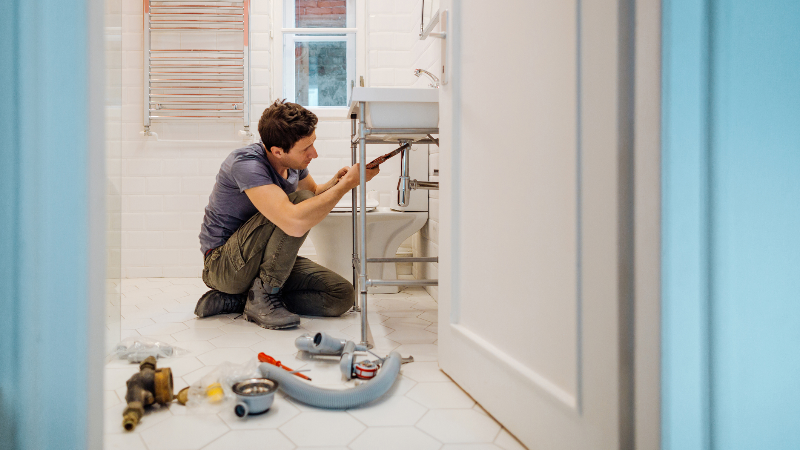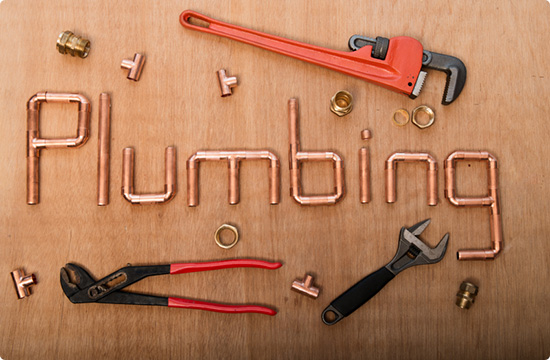Why is My House Making Odd Plumbing Noises?
Click HereHave you been on the lookout for additional info around Why Your Water Pipes Are Noisy and How To Shut Them Up?

To detect noisy plumbing, it is important to determine initial whether the undesirable noises happen on the system's inlet side-in other words, when water is transformed on-or on the drain side. Sounds on the inlet side have actually varied causes: too much water stress, worn valve and also faucet parts, poorly attached pumps or various other appliances, inaccurately put pipe fasteners, and also plumbing runs consisting of too many limited bends or various other limitations. Noises on the drain side usually stem from poor area or, similar to some inlet side noise, a layout containing limited bends.
Hissing
Hissing sound that occurs when a tap is opened a little typically signals excessive water stress. Consult your local public utility if you suspect this trouble; it will have the ability to tell you the water stress in your area and can mount a pressurereducing shutoff on the incoming water supply pipeline if required.
Thudding
Thudding noise, usually accompanied by shivering pipes, when a tap or appliance valve is switched off is a condition called water hammer. The sound as well as resonance are brought on by the reverberating wave of stress in the water, which all of a sudden has no area to go. Often opening up a valve that releases water quickly right into a section of piping having a limitation, arm joint, or tee fitting can create the same condition.
Water hammer can typically be treated by mounting fittings called air chambers or shock absorbers in the plumbing to which the issue valves or taps are connected. These devices permit the shock wave produced by the halted circulation of water to dissipate in the air they consist of, which (unlike water) is compressible.
Older plumbing systems might have short upright areas of capped pipe behind wall surfaces on tap runs for the exact same objective; these can at some point loaded with water, decreasing or ruining their effectiveness. The remedy is to drain pipes the water system totally by shutting down the major water system shutoff and opening up all taps. After that open the primary supply shutoff and also close the faucets individually, beginning with the faucet nearest the valve as well as finishing with the one farthest away.
Babbling or Screeching
Extreme chattering or screeching that occurs when a shutoff or faucet is turned on, and that normally goes away when the fitting is opened fully, signals loose or malfunctioning inner parts. The solution is to replace the valve or faucet with a new one.
Pumps as well as devices such as cleaning machines and dishwashers can transfer electric motor sound to pipelines if they are incorrectly linked. Connect such things to plumbing with plastic or rubber hoses-never inflexible pipe-to isolate them.
Various Other Inlet Side Noises
Creaking, squeaking, scratching, snapping, as well as tapping typically are triggered by the growth or tightening of pipelines, usually copper ones providing warm water. The audios take place as the pipelines slide versus loose fasteners or strike nearby residence framework. You can usually determine the area of the trouble if the pipelines are revealed; simply adhere to the noise when the pipelines are making sounds. Probably you will find a loose pipe hanger or an area where pipelines exist so near flooring joists or various other mounting items that they clatter versus them. Attaching foam pipe insulation around the pipelines at the point of call need to correct the issue. Be sure bands and also hangers are safe as well as supply appropriate assistance. Where feasible, pipeline bolts must be connected to enormous structural elements such as structure wall surfaces rather than to framing; doing so reduces the transmission of vibrations from plumbing to surfaces that can amplify and transfer them. If attaching bolts to framework is inescapable, cover pipes with insulation or other resilient material where they contact bolts, and also sandwich completions of new fasteners between rubber washing machines when installing them.
Fixing plumbing runs that deal with flow-restricting tight or numerous bends is a last resort that needs to be taken on just after seeking advice from a competent plumbing contractor. Sadly, this scenario is relatively common in older residences that may not have been constructed with indoor plumbing or that have actually seen a number of remodels, especially by beginners.
Drain Noise
On the drainpipe side of plumbing, the principal goals are to remove surfaces that can be struck by dropping or rushing water and also to shield pipes to have inescapable noises.
In new building, bathtubs, shower stalls, bathrooms, and wallmounted sinks as well as basins must be set on or against durable underlayments to reduce the transmission of sound with them. Water-saving toilets and taps are less noisy than standard models; mount them instead of older kinds even if codes in your location still permit making use of older fixtures.
Drains that do not run up and down to the basement or that branch right into horizontal pipe runs sustained at flooring joists or other mounting existing especially bothersome sound problems. Such pipes are huge enough to radiate substantial vibration; they likewise lug significant amounts of water, that makes the scenario worse. In new building and construction, specify cast-iron soil pipelines (the huge pipes that drain commodes) if you can manage them. Their massiveness consists of much of the sound made by water travelling through them. Likewise, stay clear of routing drainpipes in wall surfaces shown to bedrooms and spaces where individuals collect. Wall surfaces having drainpipes ought to be soundproofed as was explained previously, making use of dual panels of sound-insulating fiberboard and wallboard. Pipes themselves can be wrapped with special fiberglass insulation produced the function; such pipes have an invulnerable vinyl skin (often having lead). Results are not always sufficient.
3 Most Common Reasons for Noisy Water Pipes
Water hammer
When water is running and is then suddenly turned off, the rushing liquid has no place to go and slams against the shut-off valve. The loud, thudding sound that follows is known as a water hammer. Besides being alarming, water hammer can potentially damage joints and connections in the water pipe itself. There are two primary methods of addressing this issue.
Check your air chamber. An air chamber is essentially a vertical pipe located near your faucet, often in the wall cavity that holds the plumbing connected to your sink or tub. The chamber is filled with air that compresses and absorbs the shock of the fast moving water when it suddenly stops. Unfortunately, over time air chambers tend to fill with water and lose their effectiveness. To replenish the air chambers in your house you can do the following. Turn off the water supply to your house at the main supply (or street level). Open your faucets to drain all of the water from your plumbing system. Turn the water back on. The incoming water will flush the air out of the pipes but not out of the vertical air chamber, where the air supply has been restored. Copper pipes
Copper pipes tend to expand as hot water passes through and transfers some of its heat to them. (Copper is both malleable and ductile.) In tight quarters, copper hot-water lines can expand and then noisily rub against your home's hidden structural features — studs, joists, support brackets, etc. — as it contracts.
One possible solution to this problem is to slightly lower the temperature setting on your hot water heater. In all but the most extreme cases, expanding and contracting copper pipes will not spring a leak. Unless you’re remodeling, there's no reason to remove sheetrock and insert foam padding around your copper pipes.
Water pressure that’s too high
If your water pressure is too high, it can also cause noisy water pipes. Worse, high water pressure can damage water-supplied appliances, such as your washing machine and dishwasher.
Most modern homes are equipped with a pressure regulator that's mounted where the water supply enters the house. If your home lacks a regulator, consider having one professionally installed. Finally, remember that most plumbers recommend that water is delivered throughout your home at no lower than 40 and no greater than 80 psi (pounds per square inch).
Whatever the state of your plumbing, one thing is certain — you’re eventually going to encounter repair and replacement issues around your home that require professional help. That’s where American Home Shield can come to your aid.
https://www.ahs.com/home-matters/repair-maintenance/causes-of-noisy-water-pipes/

As a fervent reader about How To Fix Noisy Pipes, I thought sharing that piece of content was beneficial. Loved our blog entry? Please share it. Help someone else find it. Kudos for your time. Kindly check up our site back soon.
Visit My Web Page